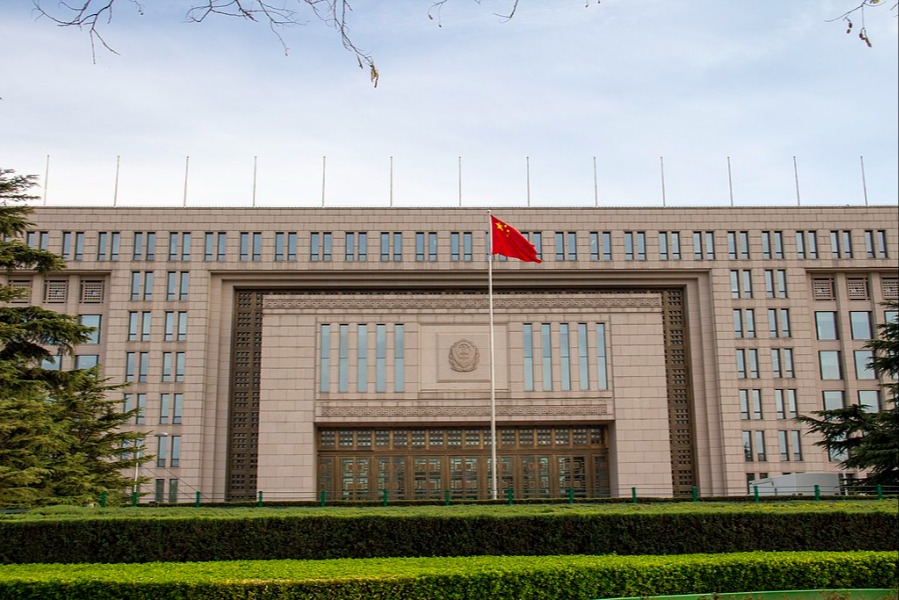Trump’s Controversial Views Combine on the Security Issue of Climate Refugees
When President Donald Trump signed an executive order temporarily banning refugees from a number of Muslim-majority countries from entering the United States and blocking Syrian refugees indefinitely, his justification was that the ban was necessary to “protect the American people from terrorist attacks by foreign nationals,” and to prevent the entry of those who “bear hostile attitudes toward [the United States] and its founding principles.”
Published by The Lawfare Institute
in Cooperation With

When President Donald Trump signed an executive order temporarily banning refugees from a number of Muslim-majority countries from entering the United States and blocking Syrian refugees indefinitely, his justification was that the ban was necessary to “protect the American people from terrorist attacks by foreign nationals,” and to prevent the entry of those who “bear hostile attitudes toward [the United States] and its founding principles.”
The move has provoked condemnation from Democratic and Republican members of Congress alike, world leaders, and State Department officials. Many note that this policy will actually harm American security interests, both at home and abroad. But few have noted the ways in which President Trump’s refugee policy is linked to another set of his controversial views: those on climate change.
Emma Lazarus’ poem is now synonymous with the Statue of Liberty. But in the future, a large number of refugees will not actually be “wretched refuse” of a “teeming shore.” That’s because they will have no shores, their islands having been swallowed by rising sea levels.
The issue of “climate change refugees” or “climate refugees,” is not new. Scholars have been debating whether to even call people “climate refugees” for some time. Broadly speaking, there are two types of climate refugees: Those that are displaced by political and economic instability caused by an event tracing its origins back to climate change, and those that are displaced because of a direct climate change-connected event (such as those who lose their homes because their island disappears).
A fair amount of attention has been focused on the later kind, in places like the Marshall Islands, Fiji, Tuvalu, the Solomon Islands, the Maldives, and Kiribati, all islands most likely to disappear. For example, law review articles have been devoted to adapting international refugee law to encompass these groups (see here and here). Discussions leading up to the Paris Agreement had the purpose of doing just that, along with creating an organization to handle climate refugees.
But because of a combination of political conditions and a lack of clear-cut science on when islands will start disappearing, there has been no real action, even as new evidence suggests that climate change is happening faster than even the most alarmed scientists anticipated and that climate change is becoming more dangerous to human health and security than ever. The latter is one reason why the U.S. government had recently started to address the issue.
The Department of Defense has recognized climate change as a “threat multiplier”—a force that compounds the danger of already volatile situations—since 2007. And last year, then-President Obama issued a memorandum directing agency principals to ensure that climate change impacts on national security were considered.
The focus on climate change as a national security issue became especially poignant in the waning months of the Obama administration. On Lawfare last month, Alice Hill and Jane Chong referenced the National Intelligence Council’s examination of the threat of climate change. Their article attempted cautious optimism, noting that President Trump has a “stated willingness to consider the evidence,” and might therefore could prove to be more open-minded about climate change than his past statements have indicated.
Unfortunately, President Trump’s actions since taking office continue to be more consistent with a person who believes that global warming is a “hoax” created by the Chinese to stunt the growth of U.S. markets than those of a president who understands climate change represents a grave national security threat.
And as Alice and Jane note, the issue of climate refugees is not attenuated from the current ban on Syrian refugees. Thomas Friedman, in the documentary series Years of Living Dangerously, traveled to Syria to explore how a massive, unprecedented drought helped lead to the Syrian revolution. In an article on the experience afterwards, he wrote:
[The] Syrian disaster is . . . what happens when an extreme weather event, the worst in Syria’s modern history, combines with a fast-growing population and a repressive and corrupt regime and unleashes extreme sectarian and religious passions, fueled by money from rival outside powers . . . all at a time when America, in its post-Iraq/Afghanistan phase, is extremely wary of getting involved.
Friedman explains that climate change was the main driver behind the devastating drought, which drove farmers into the city where they were unable to find work; their desperation led to protests and rebellion when the Assad regime refused to listen to their cries for help.
The Syrian civil war and the rise of ISIS led to tens of thousands of Syrian refugees fleeing to surrounding countries, including the U.K. This exacerbated what was already seen as an invasion of immigrants, and was a central issue in the popular referendum to leave the EU, popularly known as “Brexit.” Brexit could potentially cause a host of national security issues, from undermining the united front against Russian aggression, to damaging intelligence-sharing and threatening the European Project.
These cascading and unpredictable consequences are one reason why a presidency with any interest in evidence would focus on climate change as an important driver and accelerant of security problems. From a security perspective, it insufficient for America to simply “maintain [our] seat at the table” on the climate change negotiations, as Secretary of State-designate Rex Tillerson suggests. The nature of American interests in ensuring the issue climate change and climate refugees is properly addressed demands we take a leadership role.
Despite a cabinet filled with fossil fuel advocates like Rex Tillerson, Rick Perry, and Scott Pruitt, this is an area in which the permanent bureaucracy that makes up most of our government may provide needed continuity. As Jack Goldsmith has argued, the "persistence in the interests and outlook of the national security leadership and especially of the national security bureaucracy” has a staying power over presidential administrations.
An employee in the National Park Service provided a recent example, tweeting about climate change even after the Department of the Interior received a gag order from Trump for tweeting about his low inauguration turnout numbers. And the military has trained in how to handle humanitarian crises and extreme weather situations at least since Hurricane Katrina. It will likely continue to do so. Like most of the military establishment, Defense Secretary James Mattis is and has long been a strong advocate of the need to address climate change and reduce reliance on fossil fuels as a matter of national security.
State governors are also emerging as critical actors willing to take up the mantle where the federal government refuses. California Gov. Jerry Brown has vowed to fight President Donald Trump on climate change. As it is probable that many climate refugees who lose their homes as a result of disappearing islands will flee to the shorelines of the Pacific Ocean, California has the largest vested security interest in proactively addressing climate refugees and is unlikely to drop the issue any time soon.
In light of Trump’s actions, it’s hard to believe that his administration will address the security issues involving climate refugees. But the efforts of other leaders in this area provide a beacon of hope.




